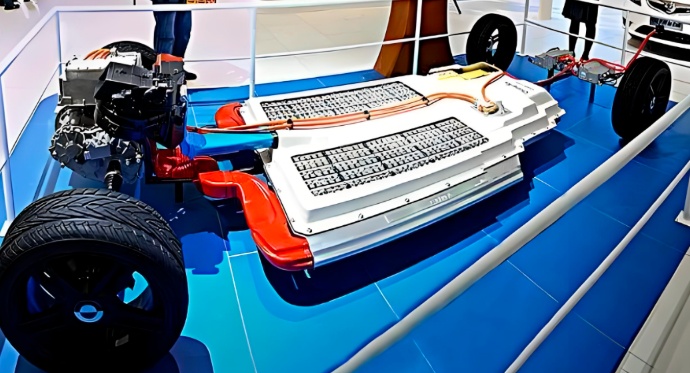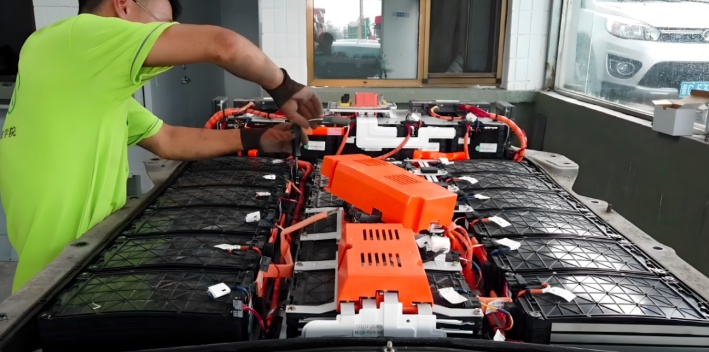Three main elastomers used in automotive battery packaging: Their Applications and Characteristics Are Closely Related
In the wave of the new energy revolution, as the storage container for electrical energy, the safety of batteries has always been of utmost importance. In the current battery packaging field, three types of elastomers are mainly used: liquid silicone rubber (LSR), thermoplastic elastomer (TPE), and fluororubber.
Fluororubber offers the most comprehensive performance but comes with the highest cost. LSR stands out in terms of sealing and process compatibility, while TPE excels in cost-effectiveness and processing flexibility.The three should be matched according to the performance priorities of the specific encapsulation parts.
I. Liquid Silicone Rubber (LSR)
LSR is liquid silicone rubber formed through injection molding, with core advantages including excellent elasticity after vulcanization and extremely strong sealing properties, capable of perfectly conforming to the complex structure of battery components.
- Core Features
-
Top-notch sealing performance: Seamless after vulcanization, low compression set (usually <5%), able to withstand slight internal pressure of the battery long-term, preventing electrolyte leakage. -
Aging resistance and temperature stability: It can work long-term at -60℃ to 200℃, with good ozone and UV resistance, matching the 8-10 year lifespan of the battery. -
Flame retardancy compliant: By adding flame retardants, it can easily reach UL94 V-0 grade, but the electrolyte resistance is moderate, and long-term exposure to highly corrosive electrolytes may cause swelling.
-
- Specific Application Fields
-
Top seal for battery cell: Used for sealing around the tabs of prismatic/cylindrical battery cells to prevent electrolyte leakage. -
Terminal protective sleeve: Encloses the battery terminals, providing insulation, sealing, and temperature resistance to prevent gaps at the connection points due to temperature fluctuations. -
Small sealing rings: such as sensors and connector sealing rings inside battery modules, which need to be adapted to precise structures and require high sealing performance.
-

II. Thermoplastic Elastomer (TPE)
TPE is an elastomer that can be repeatedly heated and shaped without the need for a vulcanization process, offering high processing efficiency and significantly lower costs than fluororubber and LSR. It is considered a "balanced choice between performance and cost."
- Core Features
-
High processing efficiency: Traditional plastic processing techniques such as injection molding and extrusion can be used without the need for vulcanization waiting time, making it suitable for large-scale mass production of battery components. -
Cost-effective: The material cost is only 1/3~1/2 of that of fluororubber, and the scraps can be recycled, reducing the overall cost of battery packaging. -
Performance limitations: narrow temperature range (typically -40℃ to 100℃), prone to swelling after long-term contact with electrolytes, higher compression set than LSR (about 10%~15%), and slightly weaker sealing and aging resistance.
-
- Specific Application Areas
-
Battery module housing seal gasket: Used for the joint sealing between the module housing and the enclosure, with no extreme requirements for temperature resistance and electrolyte resistance, but needs to be low-cost and suitable for mass production. -
Battery cell cushioning pad: Wraps around the sides of the battery cell, primarily providing cushioning and collision protection, while also assisting in sealing, without the need to withstand extreme conditions. -
Connector sheath: Used for the protection of external low-voltage connectors of the battery. The ambient temperature is relatively stable, and there are basic requirements for elasticity and insulation.
-

3. Fluoroelastomer (FKM)
Fluororubber is a synthetic rubber containing fluorine atoms, exhibiting optimal performance in chemical resistance, high-temperature resistance, and aging resistance. It is the "first choice for high-end performance essential scenarios," but it also has the highest cost.
- Core Features
-
Excellent resistance to electrolyte: It shows almost no swelling in carbonate-based electrolytes commonly used in lithium batteries and can withstand long-term corrosion by the electrolyte. It is the only material among the three that can be in direct contact with high-concentration electrolytes. -
High temperature and aging resistance: can work continuously at -20℃ to 250℃, with short-term temperature resistance up to 300℃. Its anti-aging performance matches a battery lifespan of over 10 years, and it naturally meets flame retardant standards (no additional flame retardants needed). -
The cost and technical barriers are high: the material cost is 2 to 3 times that of LSR, requiring high-temperature vulcanization molding, with a long processing cycle, and its elasticity and low-temperature performance are slightly inferior to LSR.
-
- Specific Application Areas
-
The sealing ring of the electrolyte injection port: directly contacts the unencapsulated electrolyte, requiring extreme corrosion resistance to prevent leakage after injection. -
Battery top cover seal ring: Used for the sealing between the top cover and the casing of prismatic cells, it is in long-term contact with the internal electrolyte of the cell and needs to withstand high temperatures during charging (up to over 150°C). -
High-voltage terminal sealing: The sealing of high-voltage terminals inside the battery pack must meet the requirements of electrolyte resistance, high-temperature resistance, and high-voltage insulation.
-
4. Comparison of Key Performance of Three Materials
|
|
|
|
|
|---|---|---|---|
|
|
|
|
|
|
|
|
|
|
|
|
|
|
|
|
|
|
|
|
|
|
|
|
|
|
|
|
|
|
【Copyright and Disclaimer】The above information is collected and organized by PlastMatch. The copyright belongs to the original author. This article is reprinted for the purpose of providing more information, and it does not imply that PlastMatch endorses the views expressed in the article or guarantees its accuracy. If there are any errors in the source attribution or if your legitimate rights have been infringed, please contact us, and we will promptly correct or remove the content. If other media, websites, or individuals use the aforementioned content, they must clearly indicate the original source and origin of the work and assume legal responsibility on their own.
Most Popular
-

List Released! Mexico Announces 50% Tariff On 1,371 China Product Categories
-

Nissan Cuts Production of New Leaf EV in Half Due to Battery Shortage
-

New Breakthrough in Domestic Adiponitrile! Observing the Rise of China's Nylon Industry Chain from Tianchen Qixiang's Production
-

Dow, Wanhua, Huntsman Intensively Raise Prices! Who Controls the Global MDI Prices?
-

Mexico officially imposes tariffs on 1,400 chinese products, with rates up to 50%






